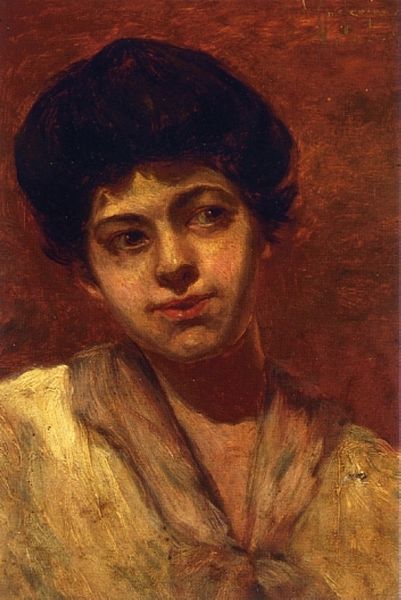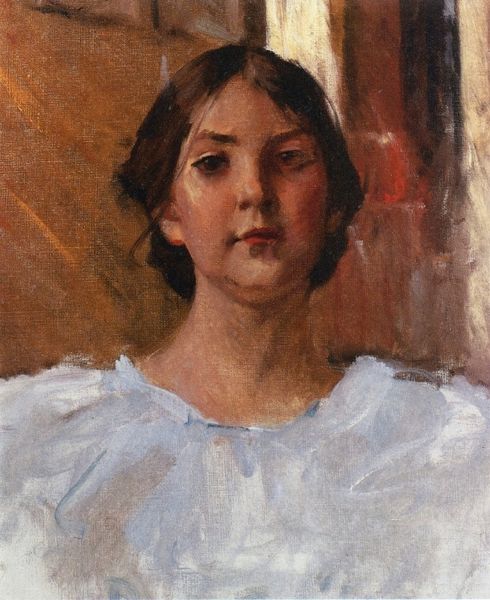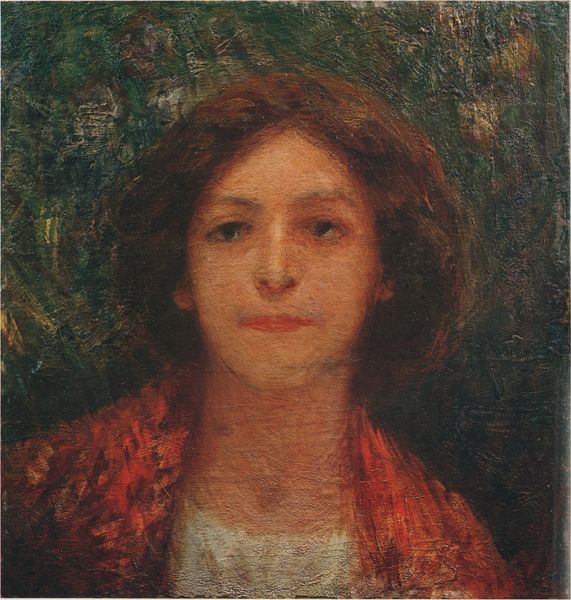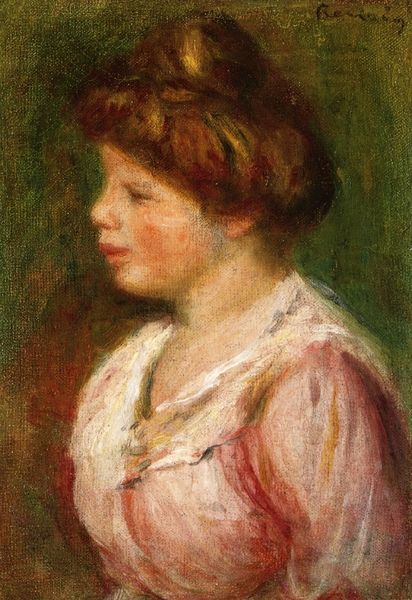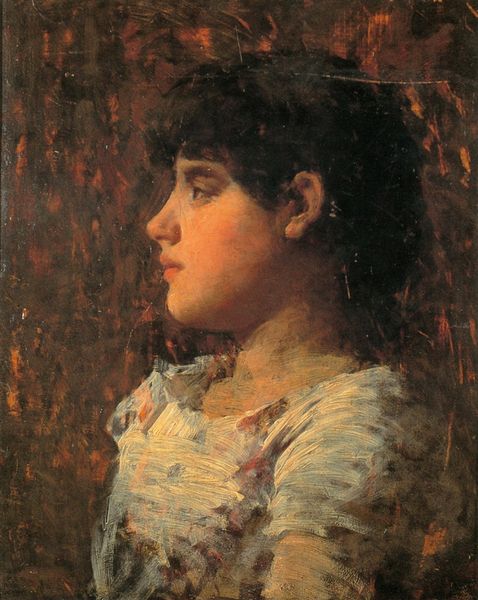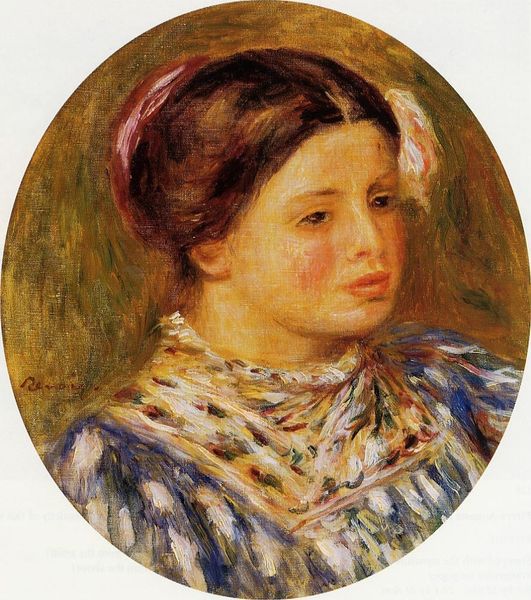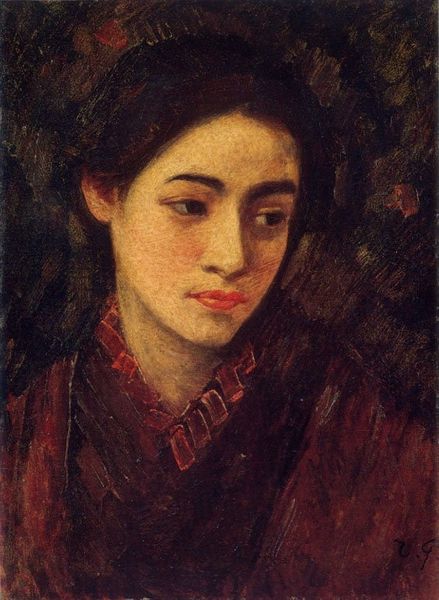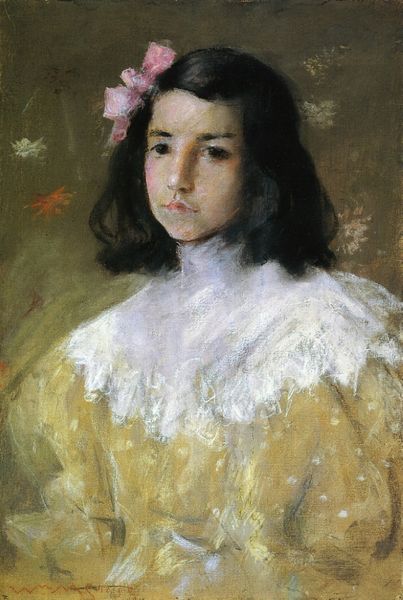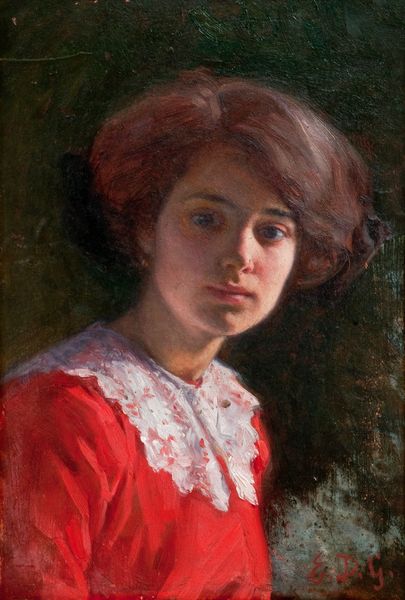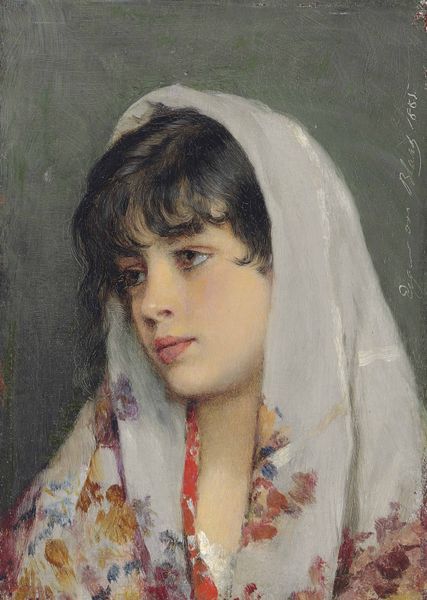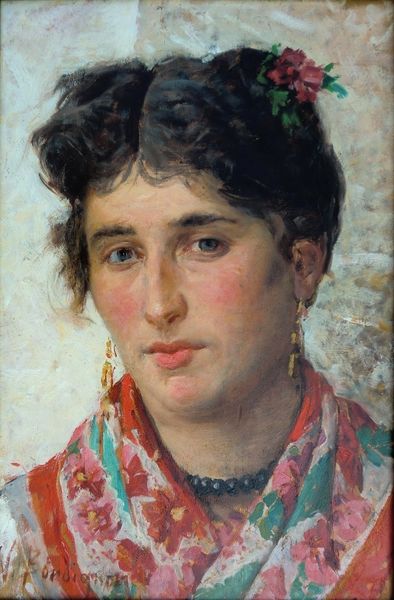
Copyright: Public domain
Curator: Fujishima Takeji painted "Ciociara" in 1908, employing oil paint on canvas to capture the subject’s likeness. What are your initial thoughts about it? Editor: There is a prevailing melancholy in the posture and affect of the subject, no? It feels symbolic of larger societal restraints on women of the period—there is a visible, internalized oppression despite the rich surface detail and visible impressionist influences. Curator: Structurally, Takeji has placed emphasis on line and shape to create this composition. Observe the strong horizontal of her shoulders, met by the dark choker. It really holds your gaze. Editor: True, the geometric rigor is definitely visible, even undeniable; and yet it also echoes, for me, constricting social structures on women and their place, visibly marked in the fashionable clothing, jewelry, and makeup. The woman is simultaneously individualized, with a visible identity through the unique rendering of her features and shading, but flattened. Curator: Tell me more about "flattened"—it is intriguing to consider how he merges the individual with an archetype. Notice how Takeji uses an economy of brushstrokes to create shadow and light? The work also plays between soft, blurred edges of the drapery and then clear, precise edges. The result adds texture. Editor: Consider how it could echo class dynamics too; perhaps a reference to rapidly-changing definitions of women’s social roles and identities during this time period, reflected in clothing of varying status and formality; this woman's adornment simultaneously evokes the wealthy elite, who donned jewels and makeup, while echoing the traditional headscarves of working women. Curator: Indeed—an interesting juxtaposition when you contextualize it within impressionism’s radical subjectivity and experimentation with form; and a subversion perhaps in the female subject taking charge. Editor: It seems impossible to divorce form from content entirely, no matter the artistic movement. To gaze into this young woman’s eyes is to look into the beginning of our modern era— the push and pull of traditions and individualizing industrial advancements. Curator: Well, Takeji gives us much to think about. Editor: A definite sign of a powerful work, rendered masterfully.
Comments
No comments
Be the first to comment and join the conversation on the ultimate creative platform.
